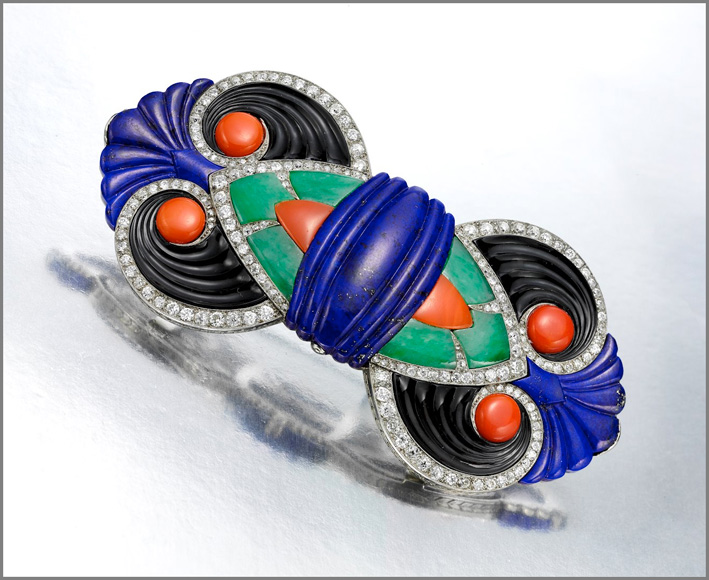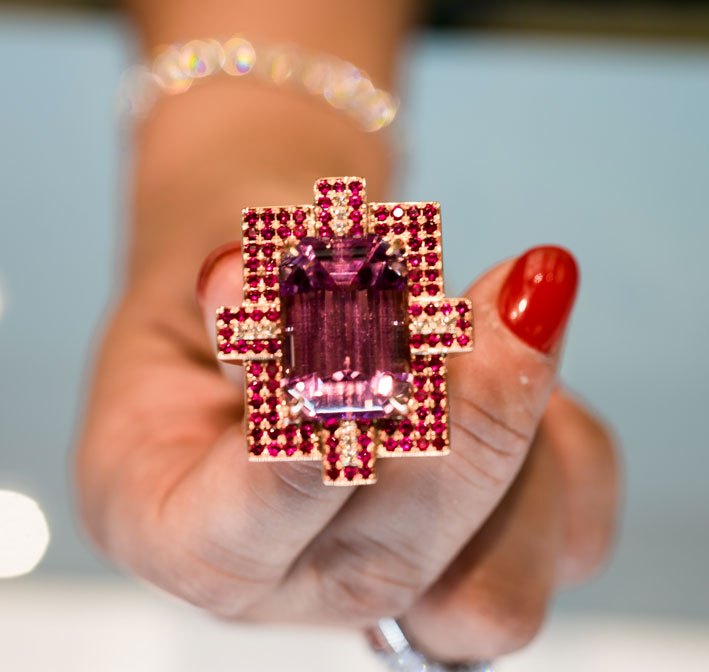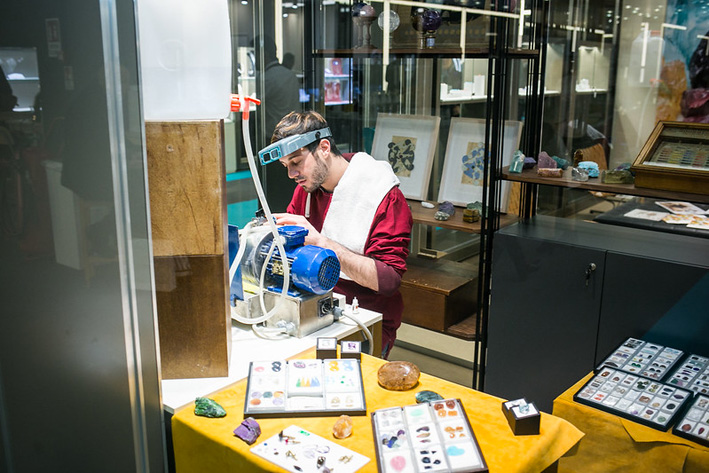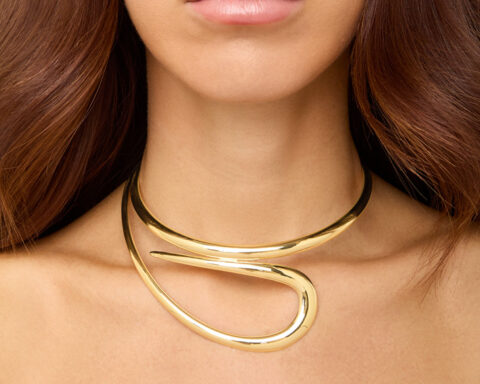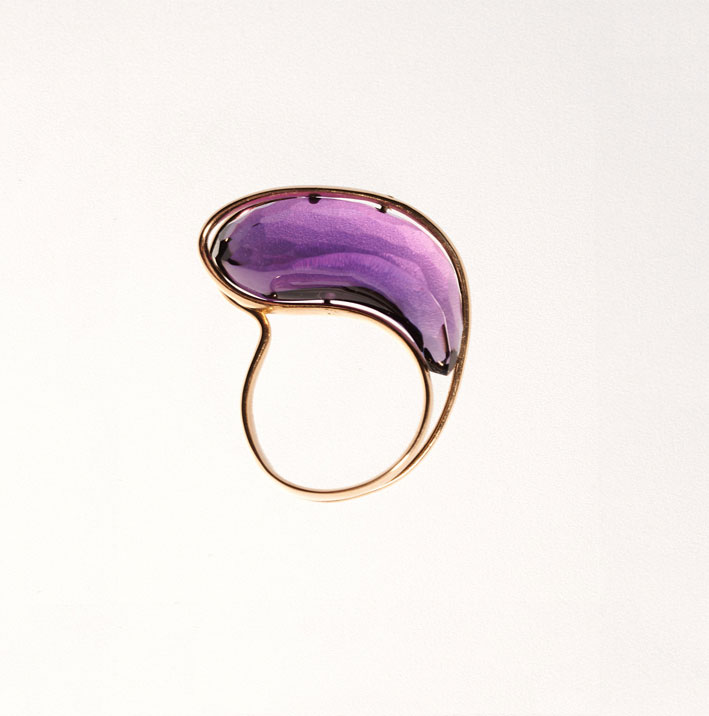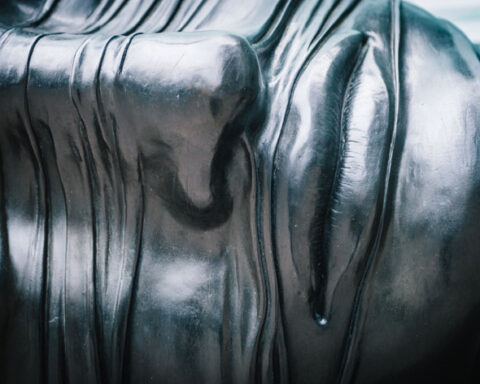Art Deco jewelry was the star of the 1920s and 1930s, but it has been rediscovered today by the big Maisons. Can you recognize an Art Deco ring or necklace? Here is a quick guide to the jewelry of the Roaring Twenties ♦
The jewelry that was fashionable a century ago is still fashionable today. Jewelry in that period was glittering, decadent and at the same time poignant. The geometric designs, the emphasis on clean shapes, often flat colors, with an architectural and classic style at the same time, have made Art Deco jewelry timeless pieces. And not only are the original ones, made in those years by the big Maisons, popular, but that style is a constant source of inspiration for contemporary designers.
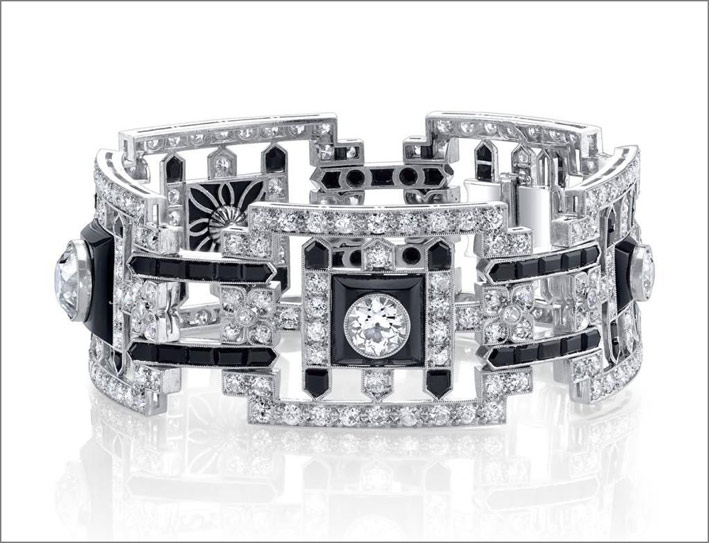
Why is Art Deco successful today? Let’s take a step back: in the world of jewelry, the 1920s and 1930s were a period of frenetic genius and innovation, of surprising ingenuity. Master jewelers such as Cartier, Boucheron, Van Cleef & Arpels, Mauboussin and Lacloche tapped into the creative energy that was taking place in Paris between the two wars. It was a time of rupture with the calm, classical era of the Belle Époque. In the 1920s, jewelry discovered new ornamental motifs, unusual materials and color, shape and movement, challenging conventions. They introduced innovative shades and textures, but also the surprising use of the monochrome piece. Free imagination This interpretation of jewelry design reflects the new freedom that women gained after the end of the First World War. Along with their corsets, inhibitions and restrictions were reduced in those years: they could work, drive, drink alcohol and smoke in public. They began to travel alone, play sports and dance the Charleston. Their clothes and jewelry simply kept pace with the new pace of life.

Like a sparkling cocktail, jewelry in the 1920s was an intoxicating mix of inspirations and influences. A bridge between the stylization of the Ballets Russes that thrilled Paris and the excitement of the Jazz Age: speed, running, the rhythm of the machine, Cubism, African art, oriental exoticism. These influences also reverberated on the creations of luxury and design. A style that ended up going down in history as Art Deco, after the 1925 Paris ExpositionInternationale des Arts Décoratifs et Industriels Modernes. The role of Cartier This style has a slow evolution. It had also been formed by the work of Cartier, who around 1910 began a greater stylization of floral motifs, with compositions composed of small carved gems. Like the series known as Tutti-frutti, a riot of emeralds, pearls, rubies and sapphires. These jewels are now among the most sought after, thanks to the most typical characteristics of Cartier’s Art Deco pieces. Perhaps not everyone knows, among other things, that the idea for this design was influenced by Indian jewelry, thanks to Cartier’s relationship with a maharajah who came to Paris to make traditional jewelry from his country, but revisited in a modern style. The combination of blue and green, taken from traditional Indian enamel work, and techniques such as that of the jewel-sculpture, played a vital role in the development of Cartier’s Art Deco jewelry.
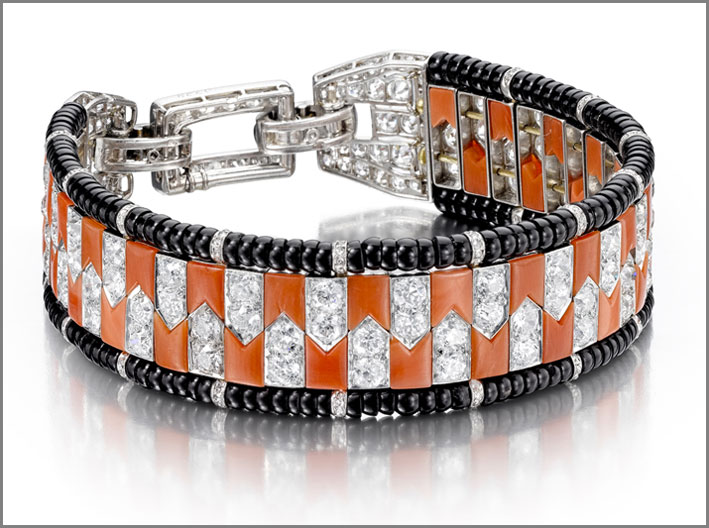
The style is still popular today. A Tutti-frutti bracelet by Cartier was sold for $1.4 million at Sotheby’s. But the most famous example of the style is the Collier Hindou, made by Cartier in 1936 for Daisy Fellowes, heiress of the Singer sewing machine company and an obsessive jewelry collector. In 1926 and 1928, Daisy Fellowes herself commissioned Van Cleef & Arpels to create a pair of Indian-inspired bracelets (or anklets): they were conceived as a deep band of diamonds arranged in a geometric pattern, reminiscent of a Persian carpet, with a lush fringe of emerald drops.
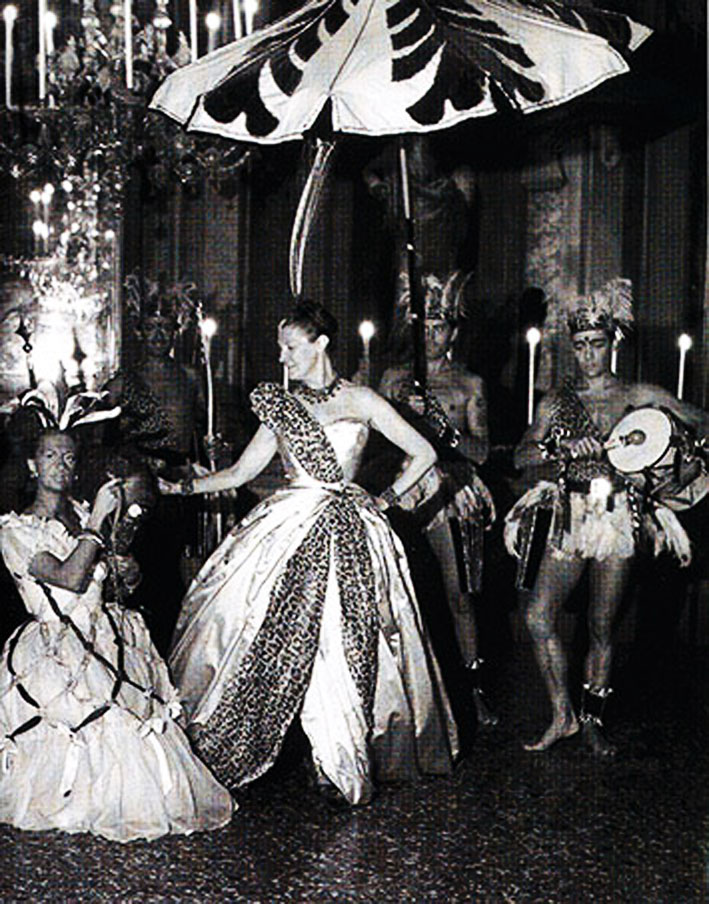
New cuts and exoticism During this period, stones were often cut into small squares or oblong rectangles, put together in an elegant design, with moldings, roundings or cabochons. As in the famous Egyptian-style frieze bracelets by Arpels, in which the scenes are drawn with impeccably cut colored gems. Cartier was not immune to the Egyptian vein, which was part of the climate of exoticism that spread to Persian, Chinese and Japanese-inspired designs, which began in the early twentieth century. In some cases, Cartier jewelry even used and incorporated fragments of ancient antiquities, such as Egyptian scarabs or amulets. From this exoticism also came the bold color combinations, which are a striking feature of Art Deco jewelry: the mix of blues and greens, sapphires with emeralds, turquoise with lapis, the contrast of coral and onyx, or coral with emeralds, diamonds and onyx.
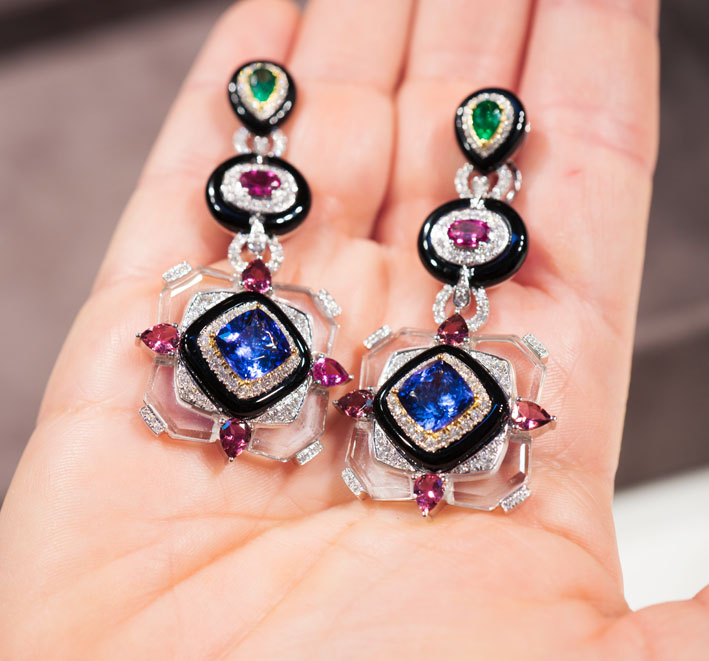
Long live monochrome In the mid-1920s, however, a change of pace arrived, an alternative mood, with monochrome colors and black and white compositions. In 1925 Tiffany proposed a ring with an onyx surface, in black segments, and diamonds. A scheme that was favored by the great talent of the designer Suzanne Belperron, in her work with Bernard Herz. Belperron summarized in a certain sense the new woman of the years between 1920 and 1930. Her jewels, like all the most beautiful Art Deco pieces, were beyond the fashion of the moment, which had adopted shapes suited to the new female silhouette, that is, dresses less designed for the “S curve” of the Edwardian woman. In those years, clothes were instead proposed with a streamlined line, with a cylindrical, tubular, short, sleeveless shape. Perhaps with fringes, beads or sequins for the dance, while the hairstyles went a la garçonne, with a short haircut, which highlighted long earrings.
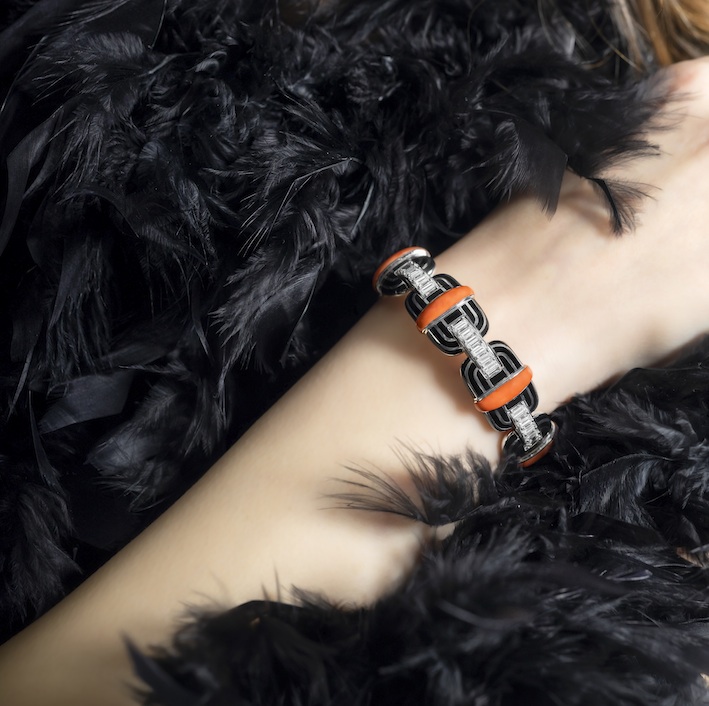
Changing the horizon The design of the jewelry of the twenties and thirties was generally vertical. The brooches had long pins, the jabot or double-headed cliquet, worn perhaps in an unusual corner of the dress, on the belt, on the cloche hats, near the neckline. And the necklaces were generally sautoir, that is, long and loose strings of beads, often with a sensual bow at the end. For the great heiresses and socialites like Daisy Fellowes, Mrs. Harrison Williams or Barbara Hutton, these fabulously modern and bold jewels were part of their personality. And yet, what were then bold designs, have become classics.
